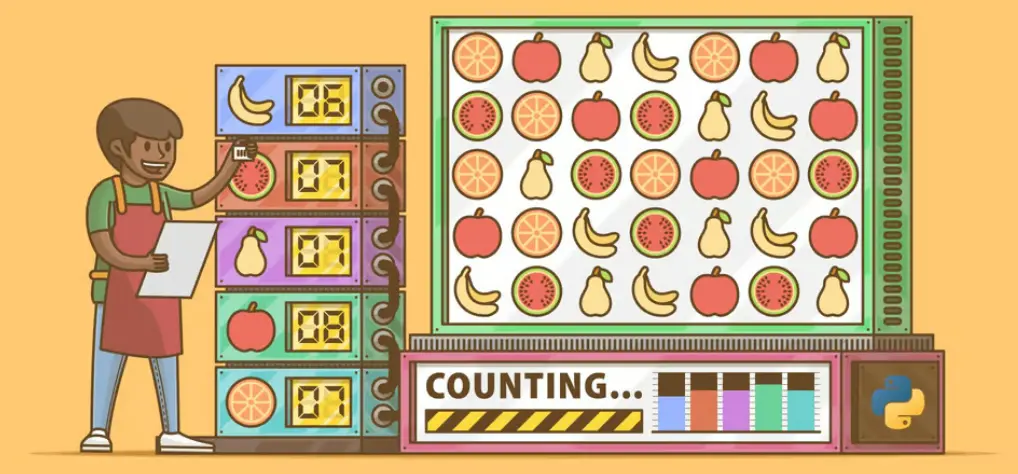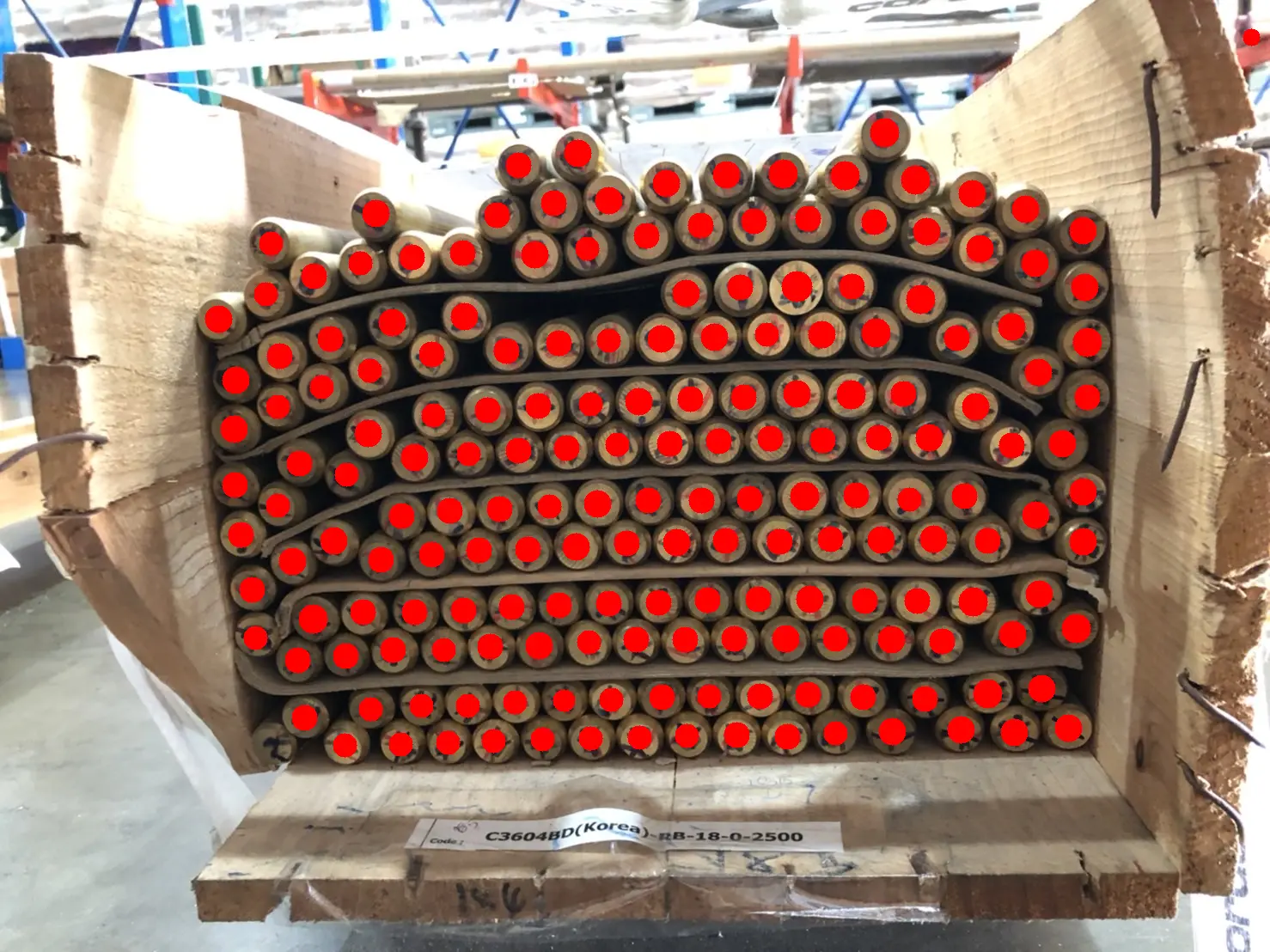Object Counting and Sorting using Computer Vision

Table of Contents
- Introduction
- What Is Object Counting and Sorting?
- Industries Where Object Counting and Sorting Are Used
- Conclusion
- Frequently Asked Questions
Introduction
In today's era of automation and technological advancement, computer vision stands out as a pivotal tool, offering remarkable capabilities in object counting and sorting tasks.
Whether in manufacturing, warehousing, retail, or even in everyday applications like traffic monitoring, computer vision systems have revolutionized the way we perceive, analyze, and interact with the physical world around us.
What is Object Counting and Sorting?

Object counting and sorting is a process used in various industries to organize and manage items based on their quantity and characteristics.
It involves systematically counting the number of objects present in a set and arranging them according to specific criteria or attributes.
This process is essential for tasks such as inventory management, quality control, and optimizing production processes.
Here's a breakdown of object counting and sorting-
Object Counting
Object counting is the process of determining the total number of items within a given set.
This can be done manually or through automated means using technologies such as sensors, computer vision, or barcode scanners.
Object counting is crucial for inventory management, ensuring that the correct number of items is accounted for and maintained in stock.
Object Sorting
Object sorting involves categorizing items based on predefined criteria such as size, shape, color, or quality.
Sorting can be performed manually by workers or automated using sorting machines equipped with sensors or computer algorithms.
Sorting helps streamline processes such as manufacturing, recycling, and logistics by organizing items for further processing, packaging, or distribution.
Object counting and sorting using computer vision involves the following steps:
1) Image Acquisition
The process begins with capturing images or videos of the objects to be counted and sorted. This is typically done using cameras or other imaging devices.
2) Preprocessing
Before analysis, the captured images undergo preprocessing to enhance their quality and facilitate more accurate object detection and recognition. Preprocessing techniques may include:
Noise Reduction: Removing noise and artifacts from the image to improve clarity.
Image Enhancement: Adjusting brightness, contrast, and color balance to improve visibility.
Image Resizing: Scaling the image to a standard size for consistency in analysis.
Normalization: Ensuring uniformity in lighting conditions and image characteristics.
3) Object Detection
Object detection is the process of identifying the presence and location of objects within the images. Several algorithms can be used for object detection, including:
Haar Cascades: A machine learning-based approach that uses a cascade of classifiers to detect objects based on predefined features.
Histogram of Oriented Gradients (HOG): Extracts features from images based on local gradients to detect objects.
Convolutional Neural Networks (CNNs): Deep learning models trained to detect objects directly from raw pixel data, achieving high accuracy and robustness.
4) Object Recognition
Once objects are detected, the next step is to recognize and classify them into predefined categories or classes. Object recognition involves using machine learning and pattern recognition techniques, such as neural networks.
5) Counting
Once objects are detected and recognized, the system proceeds to count the number of instances of each object category present in the images. There are various approaches to object counting:
Bounding Box Counting: Counting the number of bounding boxes around detected objects.
Density Estimation: Estimating the density of objects within a region and converting it into a count.
Segmentation-based Counting: segmenting objects from the background and counting individual instances.
6) Sorting
In some applications, objects may need to be sorted or categorized based on certain attributes or criteria.
Sorting can be performed using classification algorithms, where objects are assigned to different categories based on their features or characteristics.
7) Output and Analysis
The results of object counting and sorting are presented in a usable format for further analysis or action.
This may include generating reports, visualizing data, triggering alerts, or integrating with other systems for automated decision-making or control.
By combining these steps and algorithms, computer vision systems can accurately count and sort objects in various applications, ranging from manufacturing and logistics to retail and healthcare, improving efficiency, accuracy, and productivity.
Industries where object counting and sorting are used
Manufacturing
In manufacturing, object counting and sorting are used to ensure that the correct number of components or parts are assembled, processed, and packaged according to specifications. This helps maintain quality standards and prevents production errors.
Retail
In retail environments, object counting and sorting are essential for inventory management, shelf stocking, and ensuring accurate product availability for customers. Retailers use these processes to track stock levels, identify popular items, and optimize product placement strategies.
Logistics and Warehousing
In logistics and warehousing, object counting and sorting play a crucial role in managing inventory, organizing shipments, and optimizing storage space. Automated sorting systems help streamline order fulfillment processes, improve efficiency, and reduce errors in picking and packing operations.
Recycling and Waste Management
Object counting and sorting are used in recycling facilities to separate recyclable materials from waste streams. Automated sorting machines use various sensors and technologies to identify and sort different types of materials for recycling, such as plastics, metals, and paper.
Conclusion
In conclusion, object counting and sorting using computer vision represent a powerful application of technology across various industries.
By leveraging algorithms for object detection, recognition, and classification, coupled with image preprocessing techniques, computer vision systems can accurately count and categorize objects in images or videos.
This process streamlines tasks such as inventory management, quality control, and production optimization, leading to increased efficiency, accuracy, and productivity.
As computer vision continues to advance, we can expect further enhancements in object counting and sorting capabilities, driving innovation and automation in diverse fields.
Frequently Asked Questions
Q1) What is object counting and sorting using computer vision?
Object counting and sorting using computer vision is a process where machines analyze images or videos to automatically detect, count, and categorize objects based on predefined criteria or attributes.
It involves the use of algorithms and techniques from the field of computer vision to mimic human visual perception and interpret the contents of visual data.
Q2) What are the applications of object counting and sorting using computer vision?
Object counting and sorting using computer vision find applications across various industries, including manufacturing, retail, logistics, healthcare, and smart cities. It is used for tasks such as inventory management, quality control, traffic monitoring, and automated production processes.